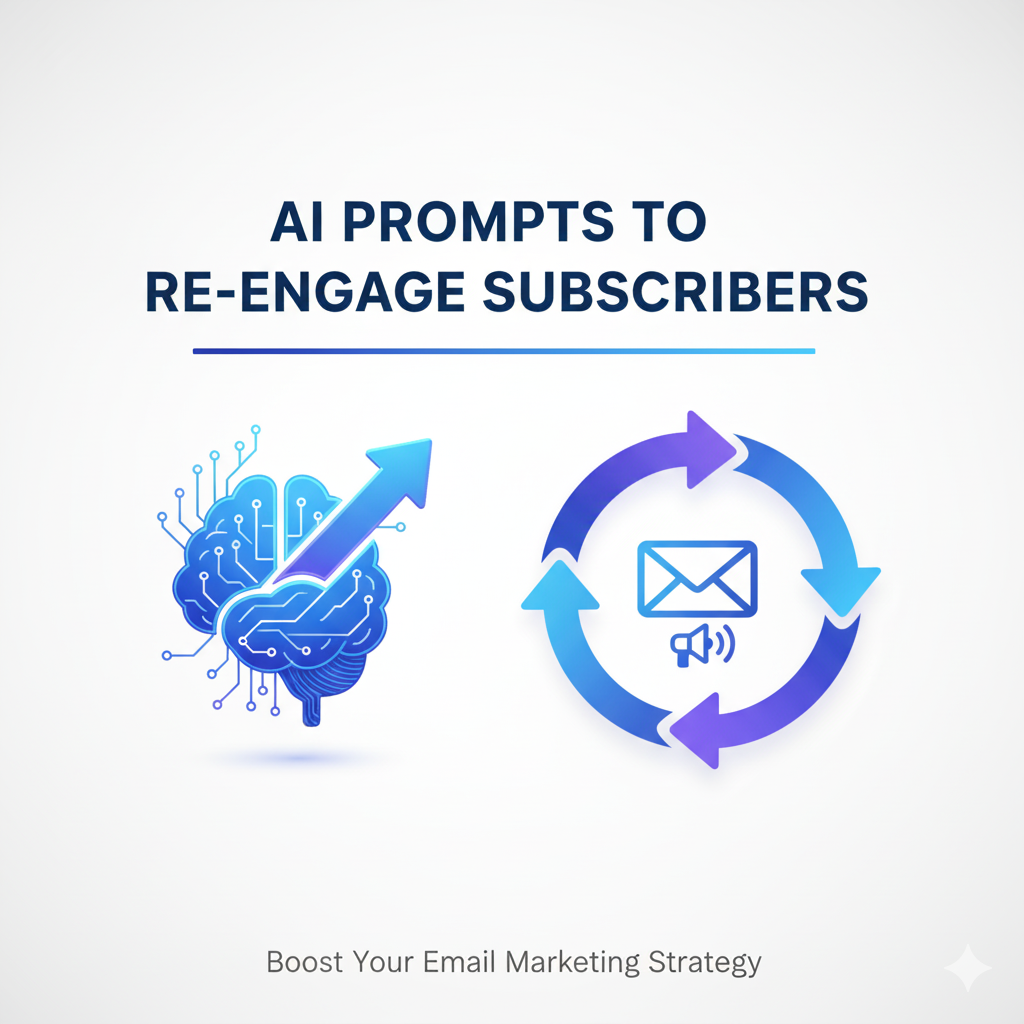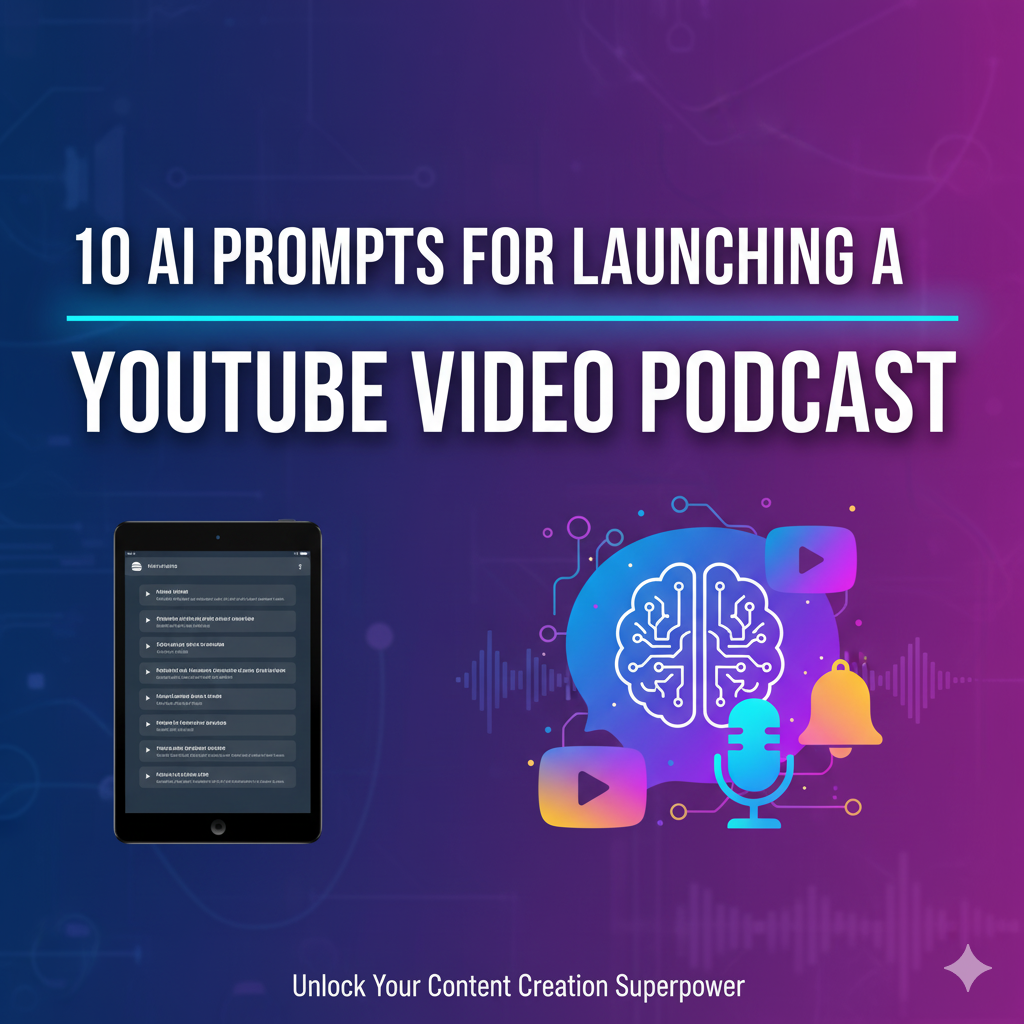Almost every business that loses subscribers repeats the same mistake: sending a generic “We miss you, here’s 10% off” email. That approach fails. In a crowded digital market, subscribers ignore sameness. Using AI prompts to re-engage subscribers allows businesses to identify drop-off points, personalize communication, and design structured re-engagement strategies that break through noise and rebuild trust.
Subscriber re-engagement is a critical function of email marketing. Without it, businesses continually lose value from their lists, spend more on new acquisitions, and weaken lifetime value per subscriber. AI changes this equation by supplying intelligence, automation, and creativity at scale. Instead of manual guesswork, you can deploy structured prompts that extract insights, generate campaigns, and optimize journeys. The following framework outlines how to apply AI systematically.
1. Diagnose Subscriber Drop-Off Patterns
Re-engagement begins with diagnosis. Businesses cannot re-engage effectively without understanding why subscribers stopped responding. Drop-off is rarely random. It is triggered by one of several recurring patterns:
- Repetition of similar subject lines and offers.
- Poor timing or frequency.
- Content misaligned with evolving subscriber interests.
- Oversaturation from competing brands.
- Lack of perceived value in the communication.
AI tools can process subscriber-level engagement data, compare cohorts, and reveal these drop-off triggers with speed and precision. For example, AI can flag that a significant portion of subscribers disengaged after receiving multiple discount-driven emails or that certain segments respond only to content-based emails.
Prompt:
Act as a customer retention specialist. I run an email list with [X subscribers] in the [industry] space. Subscribers stop engaging after [describe drop-off point]. Analyze possible reasons for disengagement and suggest 5 hypotheses, each paired with a re-engagement strategy. Ask clarifying questions before answering.
Diagnosis ensures that subsequent re-engagement attempts address the right problem instead of adding more noise.
2. Personalize Beyond Discounts
Discount-driven re-engagement is a dead end. It reduces margins, trains subscribers to wait for deals, and fails to differentiate a business. Personalization delivers higher returns because it speaks directly to subscriber intent.
AI enables personalization at scale by analyzing browsing behavior, click history, and content preferences. Instead of sending one generic re-engagement email, businesses can craft multiple narratives. Examples include:
- Storytelling Framework: Reintroduce the brand by telling a story that mirrors the subscriber’s challenges. AI can adapt tone and subject matter based on past engagement.
- Curiosity Framework: Use surprising facts, unanswered questions, or exclusive previews to spark attention.
- Urgency Framework: Communicate limited-time access to unique value without defaulting to discounts.
Prompt:
Act as an email marketing AI. I want to re-engage cold subscribers without using discounts. My audience is [describe]. Create 3 re-engagement frameworks: one based on storytelling, one on curiosity, and one on urgency. Each must feel specific, not generic.
Subscribers respond when communication reflects their motivations, not when it repeats commoditized offers.
3. Create Pattern Interrupt Campaigns
Subscriber fatigue builds when emails follow predictable structures. A pattern interrupt disrupts this conditioning and forces attention. The goal is not shock for its own sake, but relevance delivered in unexpected form.
Effective pattern interrupts include:
- Contrarian viewpoints that challenge assumptions.
- Bold predictions tied to industry trends.
- Interactive content such as polls or quizzes.
- Visual-first campaigns that differ from text-heavy norms.
- Personalized video or audio notes generated by AI.
AI supports this process by generating campaign variants, testing multiple hooks, and recommending which angles resonate best with disengaged cohorts.
Prompt:
Act as a campaign strategist. My email subscribers have tuned out because campaigns feel repetitive. Generate 5 unique pattern interrupt campaign ideas that break reader expectation and force re-engagement. Ideas must be sharp, bold, and non-corporate.
The value of pattern interrupts is that they reset subscriber perception. Once attention is regained, subsequent emails have higher probability of engagement.
4. Redefine Subscriber Segments
Most businesses overgeneralize their subscriber base. Traditional segmentation—age, location, income—fails to capture depth. Psychographic segmentation provides clarity by addressing mindset, values, and worldview.
AI-driven profiling enables sharper segmentation. For example:
- Subscribers motivated by aspirational identity respond to success stories.
- Subscribers motivated by security respond to reassurance and risk avoidance.
- Subscribers motivated by curiosity respond to newness and discovery.
By redefining subscriber segments with this precision, businesses eliminate generic campaigns.
Prompt:
Act as a market research expert. My subscriber list is broad: [describe profile]. I want to redefine my Ideal Customer Profile with psychographic depth. Provide 15 questions to uncover fears, desires, and worldview for sharper targeting.
Segmentation at this level ensures that re-engagement campaigns feel designed for the individual rather than the mass list.
5. Automate Re-Engagement Journeys
Re-engagement is not achieved with a single message. It requires a sequenced journey that gradually rebuilds attention and trust. AI excels at designing and executing these journeys.
A functional structure includes:
- Step 1: Awareness Reset. Remind subscribers of brand relevance using storytelling or curiosity.
- Step 2: Value Reinforcement. Deliver specific, tangible value that addresses subscriber challenges.
- Step 3: Social Proof. Demonstrate evidence of results or peer adoption.
- Step 4: Commitment Request. Provide a clear, frictionless opportunity to re-engage.
AI can automate testing of sequence timing, subject line variations, and call-to-action phrasing. Each interaction adapts based on subscriber response.
Prompt:
Act as an automation expert. I want to build a re-engagement journey for subscribers inactive for [X days]. Create a 4-step automated sequence testing value, curiosity, and social proof. Include timing and call-to-action placement.
Automation replaces reactive campaigns with structured systems that operate continuously.
6. Measure and Iterate with AI Feedback Loops
Re-engagement campaigns cannot remain static. Subscriber behavior changes and market dynamics shift. AI can measure effectiveness in real time, highlighting underperforming messages and recommending adjustments.
Key metrics for monitoring include:
- Open rate improvement within inactive segments.
- Click-through rate recovery compared to baseline.
- Conversion rate on re-engaged subscribers.
- Unsubscribe rate relative to control campaigns.
By embedding AI into the measurement loop, businesses avoid reliance on intuition and instead rely on data-driven iteration.
Prompt:
Act as a performance analyst. Review my re-engagement campaign metrics: open rate [X%], click rate [Y%], unsubscribe rate [Z%]. Provide a diagnostic breakdown of weak points and recommend 5 immediate optimization changes.
Measurement ensures that re-engagement strategies remain relevant instead of stagnating.
7. Apply Cross-Channel Re-Engagement
Email is primary, but subscriber re-engagement should not be confined to a single channel. AI can orchestrate multi-channel sequences across SMS, social retargeting, and in-app messaging. For disengaged email subscribers, a different medium may rekindle attention.
Cross-channel execution increases surface area for interaction and ensures subscribers encounter the message where they are most active.
Prompt:
Act as a cross-channel strategist. My email subscribers are disengaged, but they are active on [platform]. Design a re-engagement sequence that integrates email, SMS, and social retargeting. Specify message types, timing, and channel coordination.
Expanding re-engagement beyond email maximizes recovery potential.
Conclusion
Re-engagement requires more than reminders and discounts. It is a structured process involving diagnosis, personalization, segmentation, creative disruption, automation, measurement, and cross-channel execution. AI prompts supply the framework to execute this at scale and with precision.
Businesses that implement these methods stop competing in the “sea of sameness.” Instead, they deliver targeted, intelligent, and differentiated communication that restores subscriber attention and strengthens long-term retention.



